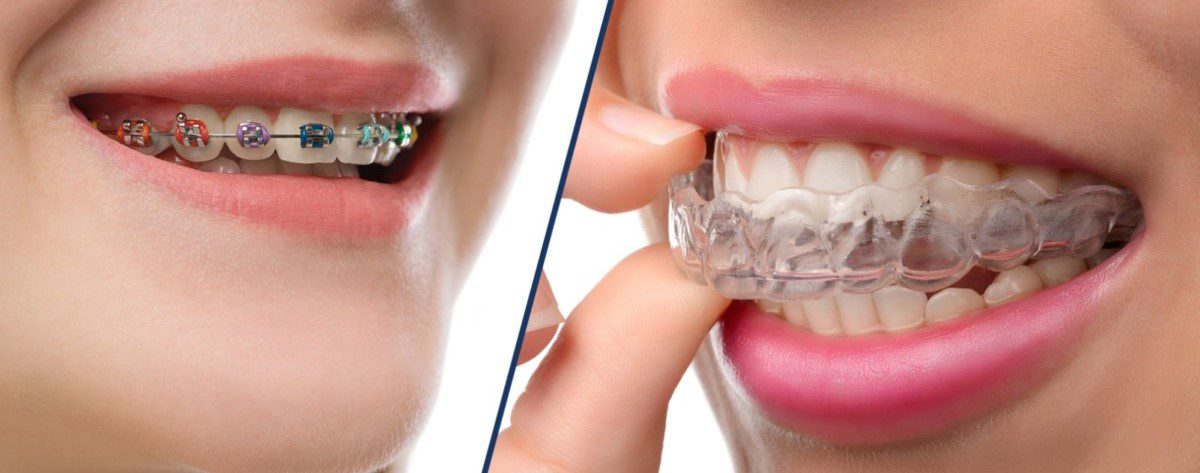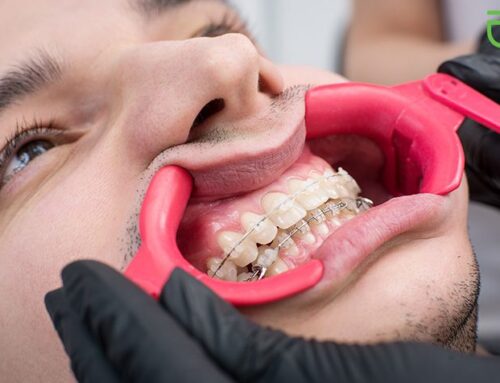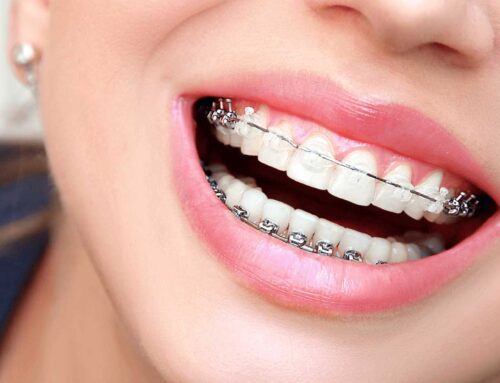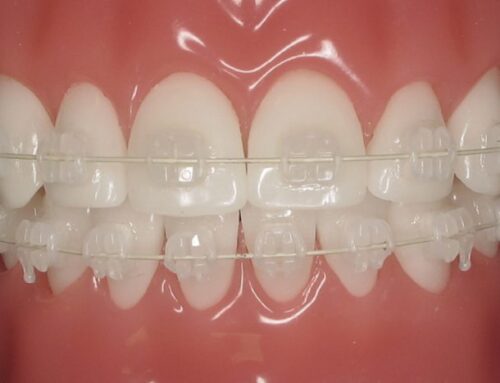Embracing Braces 101
Types of braces, when and why do we need them.
Whether you’re 7, 14 or 24, there’s a point of time in life when you will wonder “Do I need braces?”. And as much as the idea of wearing them nauseates you, they are important to get that perfect selfie that you’ve been dreaming of clicking someday.
Braces are in literal terms “appliances” used to straighten your teeth.
“Straighten my teeth?” You’re probably wondering what on earth does that mean. Well, if you’re dealing with one or more of the following problems, you most likely need braces.
- your teeth are apparently out of shape or crowded
- you’re having a hard time flossing between and brushing around crooked teeth
- you’re constantly biting the side of your cheeks while eating
- your teeth don’t close over one another appropriately when your mouth is resting
- you encounter difficulty in speaking properly because of your tongue’s nonalignment under your teeth
- your jaws snap or make sounds when you bite or first wake up
- you feel pain and stress around the jawline after chewing food
These are just some of the many reasons why you, or anyone you might know who’s dealing with these problems should get braces.
So exactly when should you “em-brace” your teeth?
Until recently, the most common age to get braces was the preteen and the teenage years. But more and more adults are chasing the “perfect smile” nowadays. While getting braces in your childhood has more advantages to itself than getting braces as an adult, you’re never really too old to get braces. The main advantage is that your jawline and tissues are more flexible and responsive to the pressure and movement induced by these metallic wires in earlier stages of life as and when compared to in adulthood.
Treatment may not take as long assuming that your teeth react all the more rapidly to your braces. When your teeth and jaw have quit developing, there are a few changes that braces can’t achieve. Generally, grown-ups go through similar processes as kids when they get braces.
Types of braces
The OG – Old is Metal.
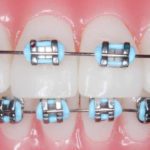
When it comes to treating extreme overcrowding, traditional braces are way stronger and more effective than modern day braces like ceramic braces or Invisalign. They give your orthodontist more power and control in terms of moving your teeth slowly and gradually. The only disadvantage of conventional braces is the “metal-mouth” appearance.
For people who feel more conscious about their smile, Invisalign treatment is a better option as they are transparent, removable aligners that adjust your teeth over time. They come without the hassle of metallic wires and brackets.
But even today’s old-fashioned braces have been jazzed up with a range of color options for wires as well as elastics. So fortunately, a lot of the stigma that used to prevail over “metal-mouth” is gone.
The Step-Up – Ceramic is the new cool.
As the world is stepping up its A-game, so is the dental industry. This just in – more and more people these days are embracing (pun intended) ceramic braces for their teeth. You ask me why?
Well, for starters, ceramic braces are almost invisible. By almost I mean if you’re standing ten feet apart from me and wearing ceramic braces, I probably won’t notice them, given I’m cross-eyed.
All jokes aside, the only thing that sets them apart from our beloved traditional metal braces is the benefit of ‘aesthetics’ (remember the A-game?). Ceramic or ‘clear’ braces as some people may call them, are very much like metallic braces except the brackets and wires can be clear or tooth colored. This means they are available in various shades of white and can be custom-built to match the color of your teeth. Even the archwires that connect the brackets can be customized accordingly and are easy to get.
These factors make them less noticeable from a distance, especially in photographs.
Although, ceramic braces are not going to accelerate the process of alignment, nor are they going to be less expensive than conventional braces (logically they’re only going to be more expensive as they are considered a “step-up” cosmetically), people are opting them over traditional metallic braces because of personal and/or appearance related reasons. That being said, ceramic braces are for people who are more concerned with the cosmetics of their braces.
There has been limited research done but some studies have found that people who wear ceramic braces accumulate less plaque on their teeth and brackets than those who wear metal braces. Also, ceramic braces don’t cause allergic reactions as compared to nickel wired braces.
The Invisible Invisalign – Now you see me, now you don’t.
The thing with technology is that it has the capability to touch the smallest parts of our lives, even our teeth. And when it does, it always leaves us in a better state than when it found us – courtesy of the great clear aligners aka Invisalign.
What most people don’t know is that Invisalign is a brand of clear aligners manufactured by Align Technology. It is the aligners manufactured in the name of Invisalign that are made from a flexible thermoplastic material named SmartTrack and are used in Orthodontic treatment.
Although these are not entirely invisible but are considerably less noticeable than the wires and brackets that come with traditional metallic braces.
Invisalign is used for the same purposes as braces, to fix overcrowding of teeth, spacing problems, and some not so severe bite issues. As Invisalign uses clear aligners without the involvement of any wires or brackets, it is not as helpful in fixing severe malocclusion or a badly aligned bite. They are also not suitable in cases where molars need to be moved into place. But since these transparent aligners have the ability to straighten teeth without the awkward metal brackets and wires, more people are choosing to opt for them. Some people also refer to them as clear braces.
But how do they actually work?
Going back to technology touching our lives in incredible ways. Turns out 3D is not just limited to movies and art, because the first step to getting a custom made Invisalign involves our orthodontist creating a 3D image of our mouth and jaw. This image is then used to create a series of customized transparent plastic aligners that gradually help our teeth to shift and move in the right places when we wear them. This is why visiting a physical brick and mortar dental clinic is so important with respect to proper and accurate fitting of your aligners and why mail/online order aligners tend to be less comfortable, fitment is key.
Typically, these aligners are meant to be worn for 20-22 hours per day. Which means we can only remove them when eating, brushing, or flossing. This is also one of the main benefits of getting Invisalign as compared to traditional braces.
The Fast Fix – Fastbraces.
When everything in the orthodontic industry is evolving, why not the time taken to fix alignment?
Enter- Fastbraces, a faster way to straighten teeth.
Fastbraces are just the faster versions of traditional metallic braces. The only difference is that Fastbraces are simpler than conventional braces. In this case, the brackets are triangular and attached to a square-shaped wire which is connected to the whole tooth and not just the crown. It is this square-like wire that makes the entire process simpler and faster than the old metallic brace alignment.
What usually happens in case of metallic braces is that the teeth are moved and shifted in the desired places in two steps. First, the teeth move slowly and then the bones under them change their shapes too. This is the reason why it takes so long, sometimes even two to three years for traditional braces to straighten our teeth. But Fastbraces work their magic onto our teeth in a simple and single process. In this case, the square wires and triangular brackets move the crown and bone under the tooth together. So, when the whole tooth moves in the desired place, the overall treatment time decreases drastically and we can get a perfect smile without having to wait years.
Apart from a dramatic reduction in the treatment time involved, Fastbraces are also less painful because they use only one wire to achieve desired results. And you also won’t need to wear a retainer for years!
The Moment of Tooth
No wonder there are more than just a few ways to fix the issues of tooth alignment out there. But which way is the best for you? We at Georgian Dental, are here to advise you the best and most effective way to get the smile you’ve always wanted. Contact our skilled team of professionals at Georgian Dental for your personal consultation, to determine the best way to fix your smile so you can walk out proud and confident, today, tomorrow, and forever!
Appointment Request
If you’re interested in any of our procedures, and would like to meet with one of our dentists to discuss options, costs and get additional information, complete this short form and we’ll give you a call to arrange for a no-obligation appointment at our Barrie clinic.
